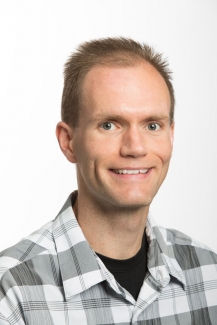We stand at the dawn of the operational FV3 era, representing the first step in the implementation of NOAA's Next-Generation Global Prediction System (NGGPS). With this new era comes many challenges, but also many opportunities to work collaboratively to improve the operational modeling system. How can NOAA best work with the community to leverage these opportunities and develop a truly world-class weather and climate prediction system? A few ideas:
Develop a decadal vision for world-class numerical weather prediction.
As FV3 becomes operational, now is the time for NOAA and the community to look forward, collaboratively, through the 2020s. Already, the field is advancing toward global convection-allowing weather prediction and ensemble data assimilation, fully coupled atmosphere-ocean modeling, and unified physical parameterizations. These are all likely to be ready for operations by 2030. Getting there, however, requires collaboration across the weather enterprise. I encourage NOAA to identify the visionaries within the field who can bring the community together to develop a vision for the operational modeling system of 2030, establish infrastructures and promote collaborations in support of this vision, and advocate for the long-term investments necessary to see it to reality.
Support applied research at lower readiness levels that have a high potential for transformative advancements.
Many of NOAA's collaborative funding programs target applied research with intermediate-to-high readiness levels and anticipated pathways to operations within two to five years. The advances resulting from such research are undoubtedly valuable. Yet, outside of limited base funding, there is arguably insufficient support for applied research at lower readiness levels with higher risk but concordantly high potential reward. This poses a significant opportunity cost: the few funded initiatives remain under development for lengthy periods of time, and many worthy endeavors never see daylight because the resources to advance their development do not exist. Regular funding opportunities for early-stage applied research tied toward the decadal vision would help to develop a truly world-class weather and climate prediction system.
Support collaboration across the operational, university, and research communities.
Fortunately, there are many examples of effective collaborations between NOAA and partners/stakeholders across the weather enterprise, with the NGGPS initiative representing one such example - albeit one that started with significant disagreements on what its focus should be, and continues today without perhaps as much buy-in across all interested parties as is needed. Unfortunately, NOAA's ability to support these collaborations is resource-constrained; as new opportunities have come, so too have existing opportunities been lost. Establishing a decadal vision for world-class numerical weather prediction may provide NOAA leadership with a cohesive plan that can be used to advocate for additional support for collaborative research.
To be sure, there are many examples of successful collaborations between NOAA and the broader community toward advancing its operational modeling systems, and the DTC is both an example and a crucial facilitator of such collaborations. With some tweaks, however, I feel that NOAA's collaborations can become even more effective. As a community, let's begin to have the needed conversations to help make this a reality.
